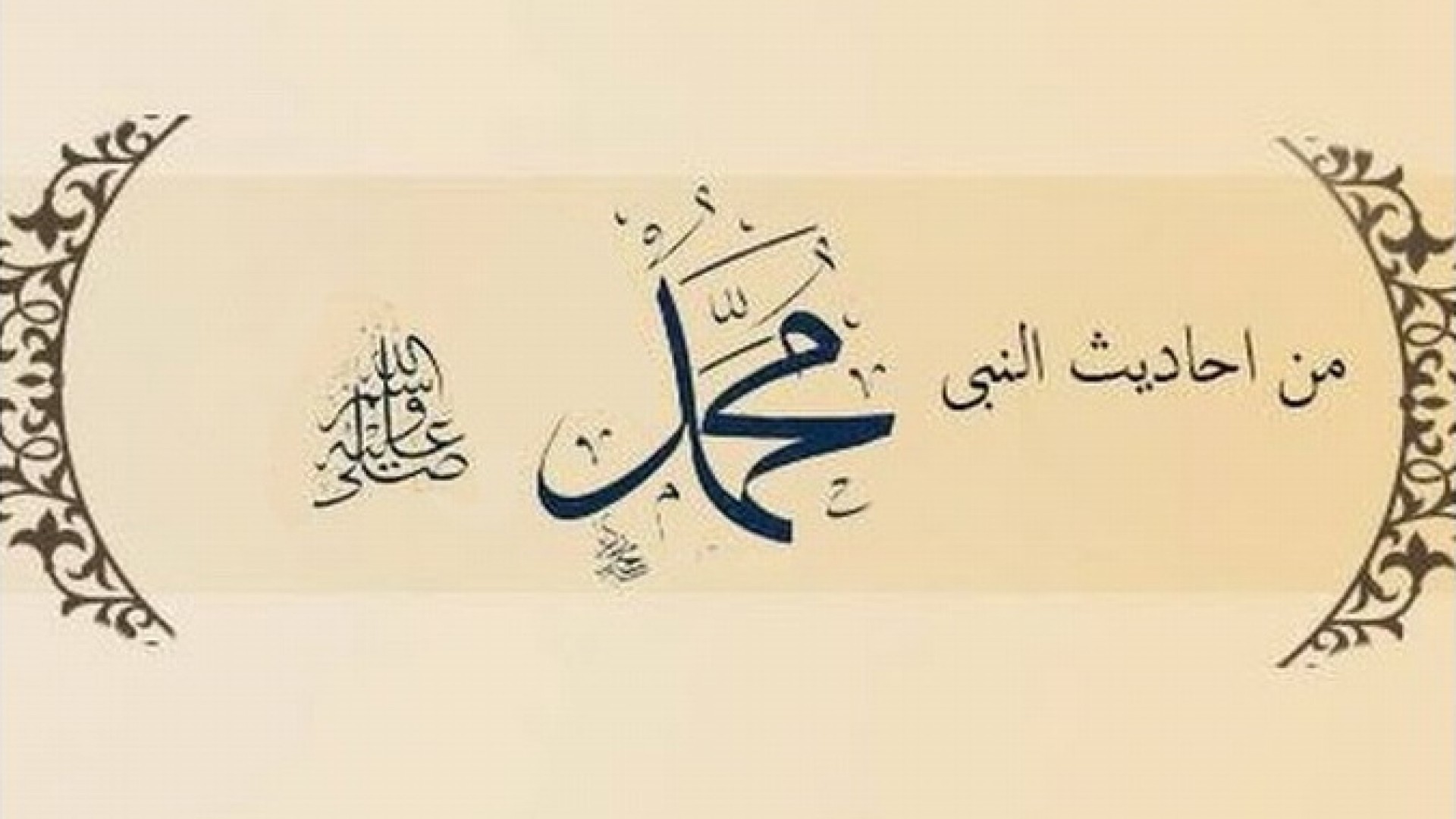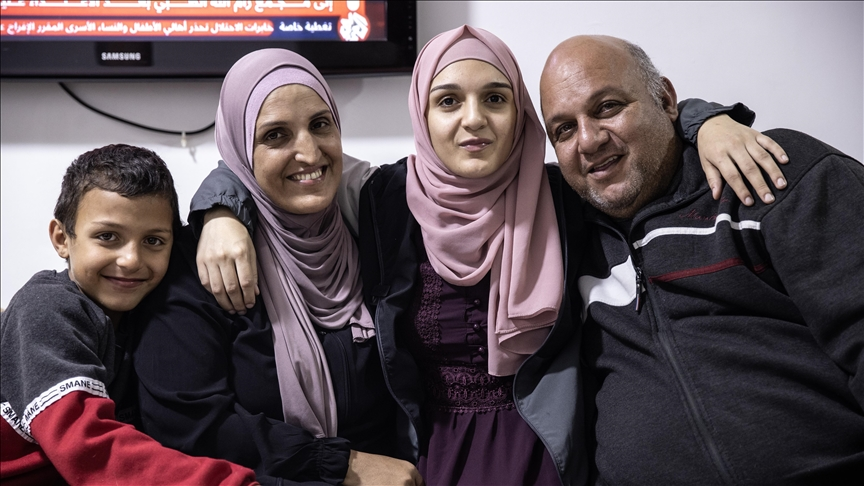Hadith after the Qur'an

The basic source of Islam
The Qur'an is the word of Allah. which through the angel Gabriel has been revealed to His Prophet, Muhammedit a.s. in duration of 23 YEARS. Story , whereas it is all that Muhammad a.s. he spoke, has acted and liked. In other words, through hadith the whole life and activity of the Prophet a.s.. From this it is clear that the Qur'an and Hadith are the basic sources of Islam. It is therefore not at all surprising why Islamic scholars are interested in the deepest possible knowledge of the Qur'an and Hadith., but also beyond, has long been and continues to be the center of attention.
Since the Hadith is a wide field, we would even say very broad, we will give only some important knowledge, hopefully they will be of benefit to the reader.
1. The value and importance of Hadith.
The great value and importance of the Hadith is pointed out in the first place by the Qur'an itself. As an illustration, we are mentioning only a few verses of the Holy Qur'an that speak directly to this end.:
“Ai (Muhammad)does not speak at will”. (en-Nexhm, 3)
” O you who have believed ! Obey Allah and obey the Messenger.” (most Nisa’ , 59)
” And whoever submits to Allah and His Messenger?, will be with those to whom Allah has given abundant blessings: with the Prophets, with the righteous, with the martyrs (martyrs) and with other good people. They are wonderful friends!” (most Nisa, 69)
“Indeed, you have the fine example of the Messenger of Allah.” (the Ahzâb, 21)
“tell (he is Mohammed): if you love Allah, follow me (follow my path) and Allah will love you and forgive you your faults (sins) YOUR. GOD is Forgiver, Most Merciful”. (Ali Imran, 31)
“.what the Prophet gives them, take it, leave what forbids them.” (el Hashr, 7)
The value and importance of the Hadith can also be seen in the following:
Anyone who reads the Qur'an carefully, will notice that in it some issues are discussed in a general way, d.m.th. without going into the details of the relevant problem. For example, although in many verses of the Qur’an the prayer is commanded, nowhere is the manner of forgiveness explained nor any other details given. Even giving zakat is commanded in many verses but, STILL, in addition to determining who should give zakat and to whom it should be given, no verse says more specifically which property is subject to zakat and how much should be separated from the wealth which reaches the right degree (nisabin). There are other examples. The decipherment and elaboration of such provisions of the Qur’an and the manner of their practical deconstruction, in accordance with the teachings and the duty given to him by Allah Almighty., meticulously made Muhammad a.s. This means that without detailed explanation of certain issues by him, many things could not have been properly understood, much less applied in practical life. For, the role and duty of Muhammad a.s. as a prophet he has been, in the first place, to explain the Revelation of Allah xh.sh.. which is clearly seen in the verse of the Qur’an:
“.and Net did we send you the announcement (The Qur’an) to explain to the people what has been revealed to them.” (en Nahl, 44) or the next verse
“.what the Prophet gives them, take it, what forbids you leave it.” (el Hashr, 7)
If we add the verse to these verses:
“Ai (Muhammad) does not speak at will”. (and Nexhm, 3)
We can say with deep conviction that Muhammad a.s., except that it is the first explanation of the Qur’an, he has also given some solutions that are not found in the Qur’an, but these solutions can only be understood when those general issues of the Qur’an had to be explained. However, it should be understood that the Hadith is always in close and complete connection with the Qur'an.
Typical examples that speak to the value and importance of the Hadith, respectively showing that the Hadith, not Kur'anit, is the fundamental source of Islam, are also the words of Muhammad a.s., since the occasion of the Farewell Hajj, before the mass, among others, has also said these words: ” I have left to you what you will adhere to, that you may never be confused or lost, for, I have left them the Book of Allah (The Qur’an) and the words of His Prophet (Hadith)”, or the case of Muadh b Jabal, whom Muhammad a.s himself. has appointed him a teacher of the Islamic Religion in Yemen. however, to get his opinion Muhammad a.s. as if appreciating it, telling: “Where will you rely on any contentious issues?” “In the Qur’an” he had replied. ” What if it is not in the Qur'an??” that was the next question. “In the Hadith” he replied. .
From what was said above, It is clear that Muslims are obliged to submit to the commands of Allah (swt) and to follow the path of the teachings of Muhammad (pbuh)., because he during his teachings as a Prophet, has been directly related to the Revelation.
2. The mode of transmission of the Hadith and its summaries.
The first to narrate the Hadiths of Muhammad a.s.. are the Companions of Muhammad a.s.. These are even the most reliable source of Hadith, for not that they have only heard directly the words of Muhammad a.s., but they have also had the opportunity to follow his practical work. After them, the narration of the Hadith was made by the Tabi'in-the first generation after Muhammad a.s., who have taken the hadiths directly from the Ash-abs, to continue then the Tebei-t-Tabi’inët-the second generation after Muhammad a.s., who were notified directly by the Tabi’in. Thus continued this chain of transmission of the Hadith.
The hadith which at the beginning of the time has been narrated simultaneously in two ways: orally and through writing. For,As-habët, except that they have learned the hadiths by heart, but they also wrote them. This statement is emphasized by all Islamic sources. According to the notes we find in “Sahih” of Buhari , the manner of narrating and teaching the hadith has gone this way: muhaddithi, or in other words, the teacher of hadith, during the lesson, that a organized, or individually, told the hadith to his students, which, except that they have memorized it, they even wrote it. Patsaj, any of the students quoted or read the hadith in front of the teacher (para muhaddithit), and in case of the slightest change, the teacher improved it, exactly as he had heard it from Muhammad a.s. Once the accuracy of the hadith had been fully proven, muhaddithi, gave permission for its further transmission.
While it was sufficient and reasonable for the Companions to mention only the name of the Prophet (peace and blessings of Allaah be upon him) during the narration of the hadeeth., for transmitters of later generations, due to distance (the distance) time, that was not enough, hence they began to mention not only the name of the Prophet a.s., but also the names of those from whom they had taken the hadith, d.m.th. the whole senedin – the names of all broadcasters in their order. For the haith transmission to go further, the last transmitter, for example, presented the hadith with all its sanad, to the source – to the Prophet a.s., often even with some note, using expressions: “more (axis of) has shown.”, more (on) has announced.”,more (on) has announced.”, I heard from.”, or short “nga.” . Any transmitter, during the narration of the hadith, had to use any of these expressions, THAT, according to the muhaddithin, each of these expressions has the same value for the narration of the hadith. With these expressions, of course it is reported that the narrators of the hadith have met, have talked and in that case have heard the relevant hadith from one – other.
That the Hadith has been written since the time of Muhammad a.s.. speak the basic Islamic sources, but nonetheless, the hadith narrated by Abu Sa'id al-Hudri, which is included in “Sahih” of Muslim : “Do not write anything from me except the Qur'an. Who wrote among me anything other than the Qur'an?, let him delete it. Narrated by me (orally), for there is no sin on this. And who slanders me by making me a liar (who says something as if I said it), he will find his place in Hell”, has given scholars the opportunity to discuss the matter. Although this hadith speaks quite generally about the prohibition of writing Hadith, the vast majority of scholars, commenting on the hadith in question, are of the opinion that the prohibition of writing the Hadith belongs only to the first days of the Revelation, because Muhammad a.s. – say the scholars – , knowing well the general circumstances of the time, but also the preparation and skills of the people, he was afraid that his words would be mixed with the text of the Qur’an. We think that in this regard the most accurate definition was given by the most well-known contemporary Islamologist prof.. Mohammed Hamidullahu. Commenting on the above hadith he says that to find a better solution, as to the prohibition of writing the Hadith, should be borne in mind: the stop was individual, relating to those who have just learned to write, or with those who have just accepted Islam,who have not been able and have not been able to distinguish between the Qur’an and the Hadith. For these individuals – continues Hamidullahu – the ban has been lifted after they have advanced in knowledge; the prohibition was intended to prevent the writing of the Hadith in copies of the Qur’an, to avoid mixing the text of the Qur’an with that of the Hadith; stops – says Hamidullahu – perhaps it had to do with a certain speech. I hope we would not be mistaken if we added to these points the fact that Muhammad a.s. with this, from the beginning it was intended to show that the Qur’an is the Word of Allah.. and for the power it has, nothing can compare to it, hence neither his words.
To substantiate the position that the Hadith has begun to be written since the life of Muhammad a.s., from the numerous cases we are detaching some:
-In the year of the liberation of Mecca, Pejgamberi a.s. has given a long speech before the mass. After he finished his speech, was approached by a person from Yemen, seeking from the Prophet a.s. to give that speech in writing, in which case the Prophet a.s.. commanded one of the As-habs, telling: “Write to someone!”.
-Abu Hurairah on one occasion said: “None of the Companions of the Prophet a.s. has not collected more hadiths than I have, except Abdullah b. Amr b. al-Acid, because did he write them, and I have not written them”.
-IN “Sunenin” of Abu Dawud stands the story of Abdullah b. Amr b. al-Acid: “I have written everything I have heard from the Prophet a.s. This was forbidden to me by the Quraysh, telling me that tip o writes everything, but know that the Prophet is a man and speaks even when he is happy, even when he is bitter. For this reason, I for a while gave up writing hadiths. I later told the case to the Prophet a.s.. Ai, pointing with the finger (from his own mouth) tha: “Write that I swear by Allah that from this (d.m.th. from my mouth) nothing comes out, in addition to the truth”.
Abdullah b. Amr b. al-Asit from the collected hadith notes later made a summary which he called “Sahife Sadika”.
-IN “Sunnein” of Tirmidhi includes the hadith narrated by Abu Hurairah, which indicates that a person from the Ansar had come to the Prophet a.s. and had complained to him, telling: ” O Messenger of Allah! I hear a lot from you, leek cat, because I can not remember them all”. Pejgamberi a.s. he replied: “Serve with your right hand”.
Tracing, rally, save, memorization and writing of hadiths continued even after the death of Muhammad a.s., even with an added burst. This intensive and important work was required by the various circumstances of the time: reducing the number of Ashab who knew the hadiths by heart, expanding the borders of the Islamic State, distribution of scholars across different centers, frequent fights etc.. Scholars spared nothing for this purpose. Thus e.g., Xhabir b. Abdullah traveled a full month on foot to learn only one hadith.
But not only that. Over time, the need arose for hadiths to be included in separate collections. Indeed, this is what the Companions began to do, who lived even after the death of Muhammad a.s. and “Ali , Xhabir b. Abdullah Ansariu, Abu Hurayrah, Abdullah b. Abbasi et al.
STILL, the great need for the collection and inclusion of hadiths, in separate volumes investigated by the generation of the Tab’in and the Tebei-t-Tabi’in.
It is worth noting that he had raised this issue, if we can say so, at the institutional level the caliph Emevit Umer b. Abdu-l-Azizi, who according to the records given by Bukhari had written a letter to the Qadi and the governor of Medina, Ebu Bekr b. Hazm (120/737) on this content: “Look and track ! Is there any other hadith of the Prophet a.s. (if any) write, for I fear that knowledge shall not perish, and the scholars are not going (die). Accepted only the hadiths of the Prophet a.s. Let knowledge be spread and lectured constantly, that even he who does not know may be taught, for knowledge will not be destroyed until it is secret”.
But this work promoted by Caliph Umar, Ebu Bekr b. Hazmi had failed to do so, poe with insistence (advising) his, this work will continue to be done by his student Muhammad b. Muslim b. Shihab non-Zuhriu (124/741) . From this time until the beginning of the year 200/815 a series of collections of hadiths are compiled in all the centers of the Islamic state: in Mecca, in Medina, in Basra, in Damascus, in Kufa etc., of which the most popular is “Muvatta” e Malik b. Enes Asbahiut (179/795), which for a time after the Qur’an was the most precious Islamic work.
A few years later, or rather, after the year 200/815, the muhaddithin continued to compile hadiths, port ash with another methodology, thus listing the hadiths according to the alphabetical order of their sanad. Hence such summaries, were called “Musned”. In a short time many were drafted “Musnede”, but the best known among them is a of Imam Ahmad b. Hambel esh-Shejbaniut (241/855).
To talk about the narration of the hadith, respectively for the dissemination of knowledge, not to mention two hadiths, which in our opinion have special importance and weight even today, we think this issue would remain somewhat unfinished.
Is for: Muhammadi ace. knowing the importance of knowledge and the necessity of its dissemination, on many occasions he has commanded the Companions to teach and to teach others, and at the end of his speech on the occasion of the Farewell Hajj, when about one hundred and forty thousand pilgrims attended, among other things, he said this: “.Anyone who is present here let him announce what is not present, because it may happen that he, who is not present here to understand him better than he who tells him”.
The second: Pejgamberi a.s., to warn people, that his words should not be misused, but to speak faithfully and be explained correctly, has said the hadith: “Who slanders me by making me a liar (says something as if I said it) will find his place in Hell”. This hadith is included in “Sahih” of Bukhari and is narrated by several senedes.
We can say that these two hadiths are in complete connection with each other. The first hadith shows that the spread of knowledge is an Islamic obligation (religious duty), while with the second the fact that the hadith is pointed out, respectively knowledge must be conveyed and explained precisely and accurately, and not according to personal interests, party, kohore etj. Some As-habs, especially those of the first generation as well: Ebu Bekri, Zubejr b.el-Avvani, Abu Ubaydah b.el-Xherrahe, but also some later as: yes Enes b. Malik, Abu Hurairah et al., relying on this hadith at the beginning, have been very cautious and reserved in over-narrating hadiths, fearing any possible mistake. it, however, should be understood as remarks for later generations, because even these have narrated many hadiths, even Abu Hurairah is As-habi who has narrated the most hadiths.
however, Later, during the first two-three centuries after the death of Muhammad a.s. under the influence of various factors, began to circulate as well “hadiths” improvised and false. Ways ways and reasons for creating “hadith” such are different. For example, someone, wanting to emphasize more any good deed, or deny any evil deed, for, to make them more compelling, he also connected his own words there, which he then described to the Prophet a.s., or for example, in factional wars, to argue his own intentions, each side has taken as argument only the parts of the hadith that would be of interest to its own party. then, many so-called stories also came into circulation “israilijat” AND “nasranijat” ETC.. THEREFORE, before Islamic scholars, sidomos p[ara muhddithëve, to separate true hadiths from fabricated and false stories, a task was set as difficult as it was important. For this work to achieve the right success, for the ulema it was clear that the issues needed to be radically analyzed: senedi and hadith, d.m.th. persons who narrate the hadith, on one side and text, d.m.th. the text of the hadith, on the other hand. Thus was born a new branch within the hadith called “Nakdu-r-Rixhal” (Critical view of broadcasters). It was necessary to know not only the names of the narrators of the Hadith and their life circumstances: where he lived, how he lived etc., but it has been important to prove it, in the first place, the reliability of each transmitter, their sincerity, religious and moral consciousness, intellectual power, their character, then the ratio between them d.m.th. it had to be proven whether they had the opportunity and opportunity for the broadcasters to learn from each other. In this connection so many biographical works were compiled that, as Sami Frashëri meant in the preface of Kamus al A’lam, only their titles would be mentioned would become numerous catalogs.
From this chronological description given above, it is clearly shown that the hadiths have been written since the time of Muhammad a.s. In the beginning they were only written by the As-habs , later began to be included in separate summaries, first in the form of brochures, to be included later in larger summaries. These summaries are of particular importance, because the hadiths could thus have been preserved more faithfully and thus serve as the main support for the compilation of more complete summaries. Indeed the up-to-date summaries of hadith, in addition to the methodological flaws of their preparation, in them, as stated above, have been able to easily penetrate even “hadiths” false improvised even more so when it is known that this has been individual work.
In the third century AH (d.m.th. in the century. 9) all the conditions were created for the compilation of the most complete collections of hadith. Now began to be compiled hadiths arranged not in alphabetical order or in any other inappropriate way of the sanad, but according to their subject matter. This was the most applied and appropriate method that matter, treated in many ways, take legal form and be accepted by all counties.
The most important summaries, most powerful and most accepted by all Islamic circles, especially by the muhaddithin, who are most competent for evaluations in this area, are six books, known by the common name “El-Kutubu-s-Sitte”,for, also known as “Sihahu-s-Sitte”, d.m.th. the six most accurate and true summaries of Hadith, which, not Kur'anit, are the main sources of Islam. They are:
1. “Sahih” of Buhariut, known as “Sahihu-l-Buhari” (194-256/810-870).
2. “Sahih” i Muslim b. the Haxhxhaxh el-kushejriut (204-261/819-874).
3. “Suneni” and Abu Dawud Sulayman b. el-Esh’as es-Sixhistaniut (202-275/817-888).
4. “Suneni” i Abu Isa Muhammad b. Isa Et-Tirmidhiut (209-279/824-892)
5. “Suneni” and Ebu Abdu-r-Rahman Ahmed b. Shu’ajb en-Nesaiut (216-304/831-916).
6. “Suneni” i Abu Abdullah b. Maxhes (209-273/824-886).
“Sahih” of Bukhari and “Sahih” of Muslim are known by the common name “Sahihajn”, or “Sahihan”, d.m.th. “The Two Sahihs”.
The other four summaries are called “Sunen” since they mainly contain hadiths that speak of the sunnah (TRADITION) and Muhammad a.s.. and for the norms of Islamic sharia, hence for Islamic legal norms.
It is worth noting that even between these six summaries there is a nuance of difference. According to estimates so far, “Sahih” of Buhari occupies the head of the country. We will talk about this in particular.
3. Category of hadiths
From the primary duties of Islamic scholars, in the first place of the muhaddithin was to approach the issue of Hadith from another aspect; make the classification of hadiths, as, as stated above, under various circumstances had also come into circulation “hadiths” with tendentious intentions, fabricated and false.
Categorization of hadiths is a very important issue, even indispensable in the science of Hadith, because the division of hadiths into categories, in itself would mean the degree of reliability and accuracy of the hadiths, and with that,naturally, it would be clear which hadith would be fully acceptable, which would be accepted with some reservation and which would be rejected outright.
In support of the literature we have, we have noticed that the muhaddiths, to do the categorization of hadiths, have been based on several criteria:
a. to what extent is the quality of the transmitters (râvive)?
b. number of transmitters (reliable) is numerous or scanty?
c. is there continuity, respectively interruptions of the chain link of the senate (or isnadit)?
In the following we will dwell on each of these points, but without claiming that we will address this issue in detail.
A. Given the quality of the transmitters, d.m.th. the degree of their reliability, or, given the non-interruption, respectively the termination of the chains of the senate, the hadiths were divided into: Authentic, Rabbits, and da’if (weak).
Hadithi Sahih: is the hadith which has been narrated from the unbroken sanad, uninterrupted, that the transmitter with the transmitter be in full connection with each other from beginning to end, but provided that all transmitters are highly reliable, there should be no narration among them that there is any doubt in its reliability. THEREFORE, to be a sahih hadith (completely true) must meet these conditions:
– The hadith must be narrated with the unbroken sanad. All persons who narrate the hadith must be mentioned and known, in the first place as muhaddiths.
– All narrators who transmit the relevant hadith, without exception they must be reliable, right, be honest and as such be very familiar to others, so let no one doubt their sincerity. Those who do not have these characteristics and these qualities, can not be considered trustworthy people.
– All narrators must narrate the hadith in a reliable manner, without even the slightest change of text (metnit), so as the Prophet a.s said. Any slight change of hadith, would lose the character of a saheeh hadeeth.
– To be accepted as sahih by all Islamic circles.
Hadithi Hasan: is a reliable hadith, sure, but of course, not of the level of sahih hadith, because some element of incompatibility can be found between the transmitters even if that element is very small, unimportant. This difference can even be noticed only by the eye of the muhaddith. Hadith hasan is also a reliable category of Hadith and is very widespread and therefore acceptable.
Hadith da'if (weak): is the hadith that does not contain the characteristics of sahih hadith and hasan hadith. In other words, da’if hadiths are hadiths, whose reliability can be seriously questioned, as in the text (text) as in his sanad. The hadith group includes da'eef: mudraxh, derelict, mevdu’ ETC.. Hadith da’if as it was said , are presented in different ways. When the narrator between the words of the Prophet a.s. has also entered his own words to more convincingly prove a good deed or to deny a bad deed, or when he ascribes his entire saying to the Prophet a.s.. is called mevdu ’. When the narrator narrates the hadith with a variable sanad, by not going in order or changing the text (of the text) of hadith, drawing one part in front of the other is called mudrej. We do not see fit to talk about other hadiths in this category.
B. According to the number of narrators who participate in the narration of the Hadith, respectively, by roads (down) distinguished:
Hadithi Mutevatir: is the hadith that is narrated in many ways, by many senede and by the most reliable transmitters. This type of hadith is more reliable, therefore every mutawatir hadith is saheeh. In the opinion of some, denial of mutawatir ihadith removes the person from Islam.
Popular: according to the muhaddithin, meshhur is a hadith which is narrated from at least three sanadas, whose transmitters are very reliable. According to some, the first transmitter, so As-habi in all three sanadah is the same person. Close to it is the hadith of Mustafa.
Aziz: is the hadith that is narrated by at least two narrators.
Sunday (ose Vahid): is called a hadith that is narrated by only one person, in the Tabiin generation.
Garib: is the hadith which is narrated by a person, regardless of in which generation. The hadith of Garib is also called ferd, which can be mutlak and nisbi.
Since the hadiths of this category are narrated by the most reliable people, they are saheeh hadeeths.
C. Based on who the hadith refers to, respectively where the senate is based, the hadiths were divided into:
Merfu’: ëuhet story, the sanad of which relies on the Prophet a.s. directly, respectively, when As-habi clearly says (as for words as for deed as for consent); “I heard the Prophet s.a.v.s. saying.”, “The Prophet s.a.v.s told us. this.”, “Said the Prophet s.a.v.s..this”, “by the Prophet s.a.v.s ..”or, “I have seen the Prophet s.a.v.s. doing this.”, “really, Pejgamberi s.a.v.s. acted thus.”;or, “In the presence of the Prophet s.a.v.s. so and so has done so.” ETC.. So the line of narrators goes back to the Prophet s.a.v.s.
Mevkuf: is the hadith whose sanad stops at the word, to the deeds or message of the Tabi'in or to the Thebei-t-Tani'in.
Ç. On the basis of non-interruption, respectively of the interruption of the senate, the hadiths were divided into:
Continuous: is the hadith, whose senate is complete and unbroken, uninterrupted,d.m.th. is the hadith narrated by the muhaddith mentioning one by one all the narrators of the hadith up to the Prophet s.a.v.s or up to the Companions, or even to the Tabi'in. Also called Mevsul.
But: is the hadith, whose senate is complete, but short.
Mu'an'an: called, story, whose sentence is related to the preposition “an”(d.m.th. “from,from”).
Mursel: the hadith narrated by any of the Tabi’in directly from the Prophet s.a.v.s without mentioning the name of As-habit, is called Mursel
Work ’:is the hadith, whose senate is not complete, respectively the narrator in the generation of the Tebei-t-Tabi’in is missing.
Mu’dal: is the hadith that two or more narrators are missing in the middle of the sanad.
Mubham: is called a hadith when the narrators are not mentioned by name in the sanad, for me “from someone, e ky. from someone”.
To round out this issue, It is worth noting that special works have been done to categorize the Hadith, which means that this field is very broad. Even for their definitions, Islamic scholars do not have the same opinions.
Bukhari and his Sahih
Abu Abdullah Muhammad b.. Ismail b. Ibrahim b. el-Mugire b. el-Xhu’fi el-Buhariu. His biography is also recorded by Sami Frashëri in Kamus al-A’lam , was born in Buhara in 194/810. After he received his first lessons and after he was endowed with solid knowledge, Bukhari since childhood, with all his being, was given after teaching Islamic knowledge, especially after the Hadith. He who in age 10 year ago became a memorizer of the Qur’an, courses in age 16 year, according to biographers he knew them by heart 60 thousand hadiths. To the question of one, a ii was answered: “I know even more than that, even if you ask me about the Companions and the Tabi'in who narrate the hadiths, for each of them I can answer you when they were born, when they died, whence they flow, how reliable they have been and their relationship to each other”. This means that remembering was his extraordinary feature. At the age 16 year went to Mecca and Medina, where he had the opportunity to learn hadith from the most renowned scholars in this field. however, to research and specialize in this Islamic field as well as to visit other capitals of the Islamic State. After staying a long time in Khorasan, Iraq, Sham, Haixhaz, Egypt etc., even after learning and utilizing the experience of famous muhaddithin, whose number exceeded one thousand, among whom were also Ahmed b. Hambeli, Ebu Nu’ajm Isafihaniu, el-Humejdiu, Ebu-l-Jemane, Ibni Râhuje, Ibn Abi Shjbe et al., returned to Baghdad. understanding, the ability and knowledge he had about the Hadith was acknowledged by all his contemporaries, so much so that there were those who said that “The hadith that Bukhari does not know is not a hadith”. Towards the end of his life he returned to his homeland, in Buhara, however, since he did not agree with the vali of Bukhara, Halid b. Ahmadine, who forced him to teach only his children, Bukhari, defending the view that in Islam everyone is equal, was compelled to release Bukhara. Went to the village of Hertenk on the outskirts of Samarkand and there, the night of Eid al-Fitr in the year 256/870, in age 62 year, VDict.
Bukhari wrote many well-known works on the Hadith, for the history of the biography of the Ashab, Tabi'ineve, respectively percent for the narrators of Hadith etc., which can be seen in the following: “El Edebu-l-Mufred”, “Kitabu esmâ-i Sahabe”. “Book ef’ali-l-ibâd”, “Book bed’i-l-mahlukat”. “Historyu-l-Bukhara”, “Book-l-liter halfel-Iman”, “Book-th-Thelathijat”, “el-Xhami'u-l-Kebir”, “el-Xhami’u-s-Sagir”, Tarîhu-th-Thikâti ve-d-Du'afâi min ruvât-i-Hadîthi” ETC..
STILL, his most valuable and important work, the deed that made Bukhari immortal, the work for which Bukhari spent the most time (16 year), works which, not Kur'anit, is the fundamental source of Islam, work that includes sahih hadiths, is the summary of hadiths “el-Xhami’u-Sahih”, known today by name “Sahihu-l-Buhari”, or known among Albanian believers as “Buhari Sherifi”.
Although until the time of Bukhari, as stated above, had become a host of collections of hadith, nevertheless, the great need for compiling a collection of only sahih hadiths was investigated. The idea for compiling such a summary was given by Ishaq b. Râhuje, teacher of Bukhari. When one day near him were some muhaddithin, among whom I too – says Buhari – ai tha: “Ah if you only collected in one book the hadiths of the Prophet a.s., d.m.th. only sahih hadiths !” these words of his deeply affected me, says Buhari, so I started working right away. from 600.000 hadiths I had collected, analyzing each of them separately, I divided only the saheeh hadiths. I have not listed any hadith in this summary – continues Bukhari – without performing ablution and without praying two rak'ahs of namaz-nafila praying to Allah xh.sh. to inspire me and help me in choosing sahih hadiths. For the preparation of this summary I spent 16 years and in addition to the text of the hadith I have also noted its sanad, d.m.th. the names of all broadcasters, whose number reaches over 1000, says Buhari.
Bukhari has divided his Sahih according to the theme in 97 libra, as i quan ai kitabe, that speak of the beginning of the Revelation, trust (iman), wisdom,your ablution, prayer, Hajj, sale, commenting on some verses of the Qur’an, for cadence and cadre, for inheritance, for respect for one another, for family relations etc., in a word themes from all human life. Books (kitabet) are divided into units (babe) and the whole summary includes 3450 unit (b .be). The Bâb may have one or more hadiths. Each bâb is titled, but there are exceptions. According to the notes we find at “Fet-hu-l-bari.” of Ibn Hajar al-Askalan, in the Sahih of Bukhari are included approx 8000 hadiths, of them 2761 are unrepeatable. According to some muhaddithin, meanwhile, unrepeatable are about 4000 hadiths. In this summary Buhariu has also given some necessary linguistic explanations.
By dividing the hadiths according to their subject, Bukhari laid the foundations of the science of Hadith, whose path was also followed by Muslim, who left behind the collection of hadiths under the name Sahihu-l-Muslim. Both of these summaries were called by one name “Sahihajn” (The Two Sahihs), Bukhari in the selection of sahih hadiths, there were very strict criteria. Ai, in the words of Hazim and Ismail, it is so expressed: “The sahih hadiths which I have not included in my book are more than the ones I have included here”, or in another case says: ” In this book I have not written any hadith other than sahih hadiths. Even the sahih hadiths which I have not written are more than the ones I have written here. I left them in order not to expand (load) rather this book”. For this reason then, sahih hadiths which are not included in the Sahih of Bukhari and Muslim, will be included in the Sunnahs of Abu Dawud, Tirmidhiut, Nesai and Ibn Majah.
It is worth noting that the merit of Bukhari and the compilers of other Sahihs does not lie so much in the fact that they for the first time made the division of the hdithas that were in circulation, which of those numbers were true and which were not, that they have collected all those hadiths which up to that time have been generally and completely accepted as reliable by all Islamic source schools.
Given the time, the language and style of the hadiths, and in order that they may be better and more rightly understood, for the Sahih of Bukhari (and for others) Numerous and comprehensive studies and commentaries have been made by the muhaddithin. Naturally, each comment and study has its own value and weight, but the most complete comment, more comprehensive, according to the estimates of Islamic scholars, without a doubt it is “Fet-hu-l Bâri bisherhi-l Buhari” i Ahmed b. Ali b. Hajar al-Askalani which we have in hand is included in 13 volumes, not calculating the specific input volume. Askalani wrote the introduction of this comment on 1411, while I started writing the comment 1414 to finish it on 1438.
Sahih al-Bukhaari has been translated into many languages, though not yet entirely.
In Turkish, in addition to the translation of 1646 hadiths selected by Sahih al-Bukhari by Konjali Mehmed Vehbi, included in four volumes entitled “Sahih-i Buhari Tercidi Sarihi Summary” published on 1966, is also the extended version with title “Sahih-i Buhari Concise Translation Sarih Translation and City”, translated by Ahmed Naimi and Kâmil Mirasi. This version constitutes 13 volumes, where they are involved 2189 hadiths. The 13th volume includes the index prepared by Muxhteba Ugur and M. Xhemal Sofuoglu. It was published in Ankara and has undergone several reprints. We have in hand the publication of the year 1984 (sixth edition). The first volume includes an in-depth study of science and the Hadith that captures the circle 500 YOUR, translated from Arabic by Ahdmed Naim. In addition to translating the text of the hadith, the necessary explanations are also given.
Interest in teaching and studying Sahih Bukhari to Bosniaks is long-standing, since before the First World War. STILL, most of the work in this language was done by Hasan ef. Shkapuri who managed to translate almost half of Bukhari Sahih which he included in four books with a very valuable commentary. Alas this valuable work ef. Skapuri failed to complete it completely because death interrupted him.
In Albanian, meanwhile, so far, as far as we are aware, no attempt has been made since Sahihu-l Bukhari, this magnificent work, to be translated in its entirety. The need to translate this famous collection of sahih hadiths into Albanian, without a doubt, it is big, especially in recent years, kun ë circulation, for different reasons, all sorts of translated brochures are coming out. Translation of the basic sources of Islam: of the Qur’an ( fortunately now we have some translations in albanian) and Hadith would enable Muslim Albanians to learn and understand Islam from the root, the more so when it is known that the number of readers thankfully, is growing. Investigating this void, the working group consisting of seven people entered the realization of this project – translation of Sahih Bukhari – and in the first stage, according to the division we have made are expected to come out of the press 8 libra, which in addition to the original text in Arabic will also have the translation. Their order is:
Libri1, Mahdi Police; Books 2. Abdullah Hamidi |; Books 3. AND 4. Feti Mehdiu; Books 5. Ismail Ahmadi; Books 6. Ruzhdi Lata; Books 7. Isa Memishi; Books 8. Bahei Aliu.
How valuable is the translation and teaching of Sahih Bukhari enough to emphasize the words of the well-known Bosnian faqih, Husein Gjozo: “THINK, he says, that in every one of our homes, in addition to the translation of the Qur’an, there must also be the translation of Sahih Bukhari. That would be real gratitude and first aid”.
Mahdi Police
Pristina, 30 JUNE 1994











